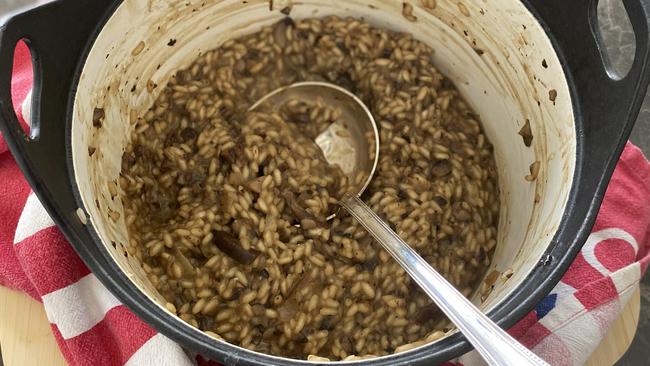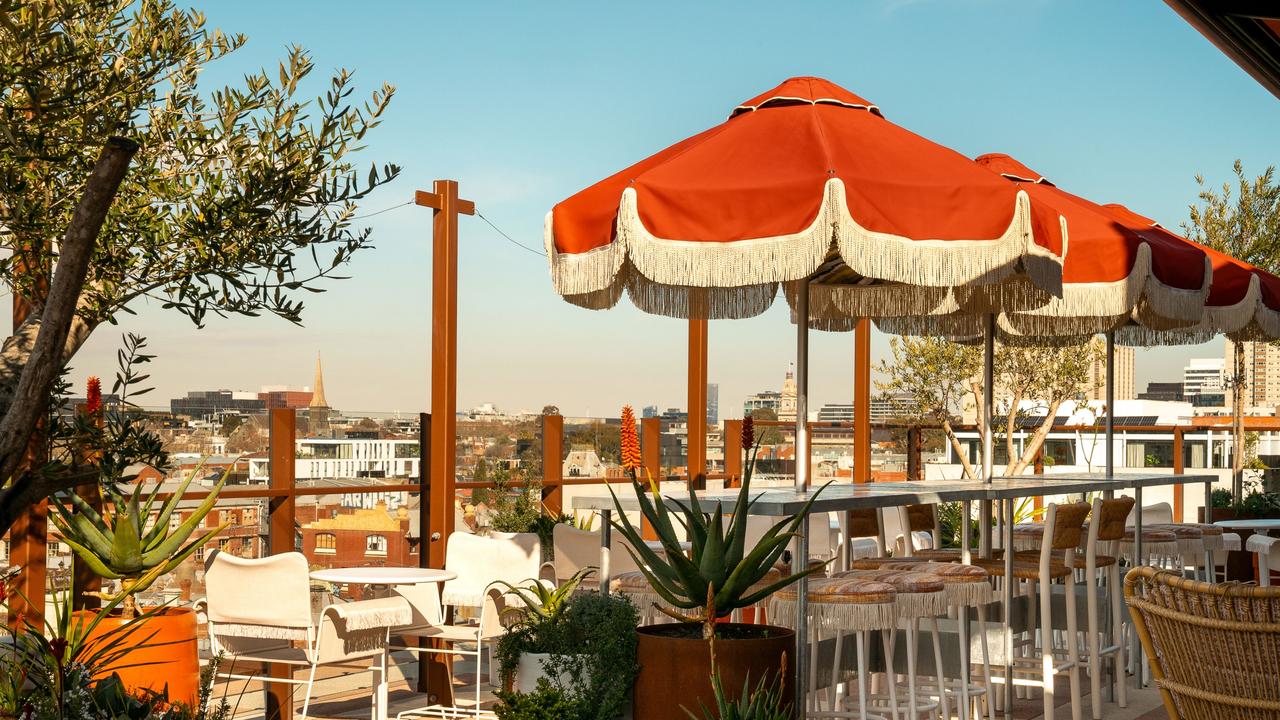How to be a risotto maestro
Risotto is about simplicity and elegance, not making a main course to fill a family.

I recall a funny night at a Victorian vineyard some years back when a group of media celebrated with impressive enthusiasm the invitation to witness Mr Boz Scaggs in the flesh.
Now, it was 1976 when Mr Scaggs burst from obscurity with Silk Degrees, an instant classic that made him famous and probably quite rich. But unsurprisingly, by the time he made it to Coldstream in 2004 he’d moved on a bit, artistically speaking. Actually he’d moved on quite a lot: Scaggs’ muse by this time was a kind of free-form jazzy thing not dissimilar to the flute scene in Anchorman. There was to be no Lido Shuffle, under any circumstances, despite the animated chant of a well-lubricated rabble on the grassy knoll about 300m from stage. It was like seeing the Stones with no Jumpin’ Jack Flash.
It must be quite difficult to become famous for something that haunts you. Joe Dolce is a poet, writer, actor and playwright, but he’ll always be the bloke who sang Shaddap You Face on Countdown. Bob Denver was Gilligan the rest of his life.
And what about Italian chef Carlo Cracco? He’s done a lot of things in his career, including being the George Calombaris figure on MasterChef Italia for six seasons, and has a very fancy restaurant in Milan’s famous mall, the Galleria Vittorio Emanuele II (so you just know it will be a bargain, right?) – but for as long as I can remember he’s been known as the maestro del risotto.
A very stylish woman once took me to his old restaurant, Cracco Peck, and of course we had a simple but amazing risotto Milanese with saffron and bone marrow. When he came to the Noosa Food and Wine Festival as a star back in 2013, Cracco did the risotto. Everyone was happy.
His trip to Australia last year was to a similar festival. When asked if there was an event I’d like to attend, as the festival’s guest, there was no hesitation. I probably sang Fratelli d’Italia in anticipation as we headed to supper. Now, notwithstanding gift horses and hands that feed, the writing was on the wall when a dish of “pineapple tartare”, different seaweeds, Parmigiano and a raw oyster came out. Mamma mia. There was no risotto! Not a grain.
So, having picked up a box of carnaroli rice on a trip to the big smoke recently, an online risotto refresher seemed in order; lo and behold, there was Carlo doing his thing, generously sponsored by an Italian rice company, of course.
He looked like Boz Scaggs forced to sing Lido Shuffle: there’d need to be a very lucrative reason. Maybe Carlo just had a no-show at the restaurant; maybe someone keyed his Maserati? But, prima facie, one is left with the impression il maestro would rather be home plucking hairs from his navel than cooking another bloody risotto. Pity; good risotto is so marvellous. And there are so many brilliant videos out there to watch (and improve your Italian, which for some of us is pretty necessary).
Just don’t expect to reach many conclusions by the time you’ve watched 10 or so. Add stock in large quantities or small? Cook relatively hard or gently? Stir constantly, or a bit, or not much at all? There are many takes on the fundamental questions, almost as many as there are variations on the theme. Risotto can be many things, but if you put packet soup mix with rice and call it risotto, you’re kind of missing the point.
Whatever you do, banish the idea that it can be a meat and three – or even one – veg meal. Risotto is about simplicity and elegance, not making a main course to fill a family. It is about texture, concentration of flavour and the harmony between rice, cooking liquid and butter/cheese at the end. Introducing too many elements, either texturally or from a flavour perspective, is to cook with a hand tied behind your back.
Good oil, shallot, white wine, rice, stock, butter and Reggiano: get that down pat and then start introducing flavours (for me, dried porcini mushrooms are a brilliant pantry staple) but make it a starter, or a light lunch, not “dinner”.
And if you’re good at it, don’t make it too often. Don’t end up resenting something when it’s one of your greatest hits.
lethleanj@theaustralian.com.au


